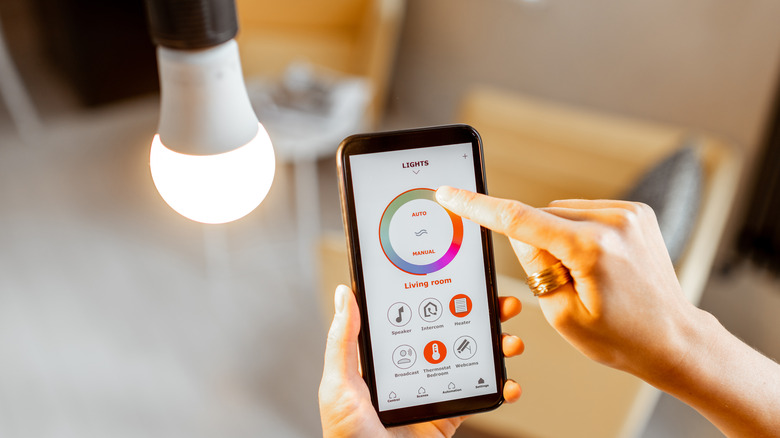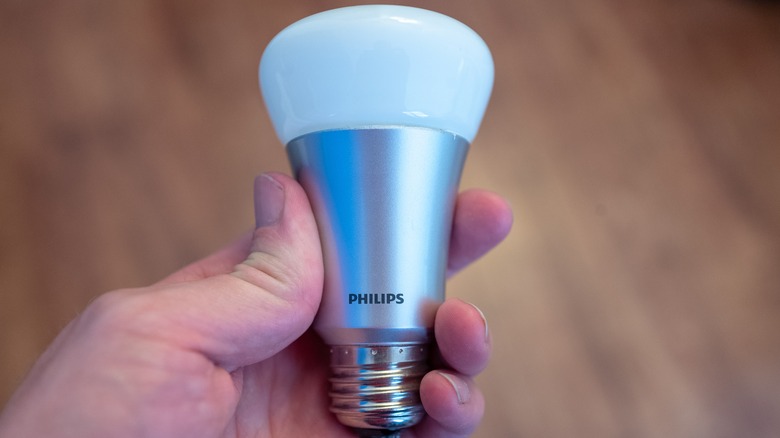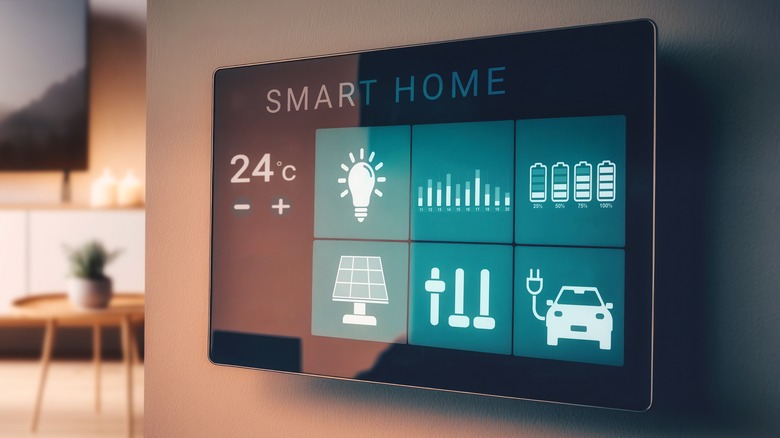3 Things You Need To Know Before Buying & Installing A Smart Light Bulb
We may receive a commission on purchases made from links.
One of the simpler ways to make one's home feel a tad futuristic, and offer conveniences you didn't realize you 'd appreciate, is to install smart light bulbs. It's not that traditional light bulbs are necessarily bad, but the smart versions offer conveniences beyond just illuminating a room. They allow users a relatively low-cost way to try smart home technology, and typically without having to knock down any walls, either.
Companies do more than simply use the word "smart" to sell you a more expensive light bulb. Smart features tend to include allowing you to remotely operate the lightbulb via a smartphone app or digital assistant like Alexa or Siri, and you can often set program schedules for the lights too. Some products, like the Wyze Bulb Color, offer a budget IoT product that allows you to switch between shades of white, an especially useful feature if you'd prefer to avoid a bright light when it's late.
Easy to install and set up
While a smart lightbulb might seem like it would come with a complicated installation process, the truth is that they're often as easy as screwing in a light bulb. Most smart bulbs can simply be screwed into any standard light fixture. Once you've downloaded the companion app, the bulb is typically easy to set up. Once you have, you can change the bulb's color or shade, set a timer, and turn it on or off. Just remember to keep the light switch in the on position so the smart parts have power to work.
It should be noted that in the ranking of major smart lighting brands, not all these bulbs work effortlessly. As Best Buy explains, some require a dedicated smart hub, which connects to an internet router, and ties the various smart lights together in a single app on your phone. The Philips Hue Smart Light Starter Kit, for instance, uses a "bridge," and claims that the connection won't drain your Wi-Fi. But many smart light bulbs don't require a hub, and send the signal directly from the light bulb.
Some of the useful, lesser-known features
After first installing your smart ligh bulb, you may be tempted to try them out by turning them on and off repeatedly via voice commands, rapidly switching between the colors they emit, and seeing just how low the dimmer will go before it's completely off (We've all done it.) But there's more these bulbs can often do as well. One popular feature is "Vacation Mode," which allows you to take the "Home Alone" approach, and set the lights at random intervals while you're gone so it looks like someone's home.
Many smart bulbs also take the concept of mood lighting up a notch, allowing you to preset a certain colors and brightness for reading, relaxing, working, watching TV, or whatever else you might be doing. The Sylvania Wi-Fii LED Smart Light Bulb even offers visual alarms, in case you'd prefer to wake up to a light gradually getting brighter instead of a ringing buzzer.
More expensive short-term, likely cheaper long-term
There are many things you should know about smart bulbs before you buy them, but the most striking difference between a smart bulb and a traditional bulb is the cost. A typical smart bulb will likely run as low as $10 and up to more than $50, with the price generally rising based on features and compatibility with various smart home systems. That's much more than a standard bulb, for which a set typically starts around $1 apiece.
But this extra cost will be made up over time by a smaller electricity bill, since smart bulbs tend to be made with LEDs, which are better than incandescent lights in part because they last longer and use less energy. Once you've set timers and scheduling, it's likely your lights will be on for less time too.
Overall, smart light bulbs are great way to dip your toes into the smart home world. If the color options, timers, and monitoring seem fun and convenient, you'll likely enjoy taking that approach to other areas of your home. If the endless colors and timers feel like annoying extras, and you'd rather just flip the light on and off, maybe stick with boring lights instead.



